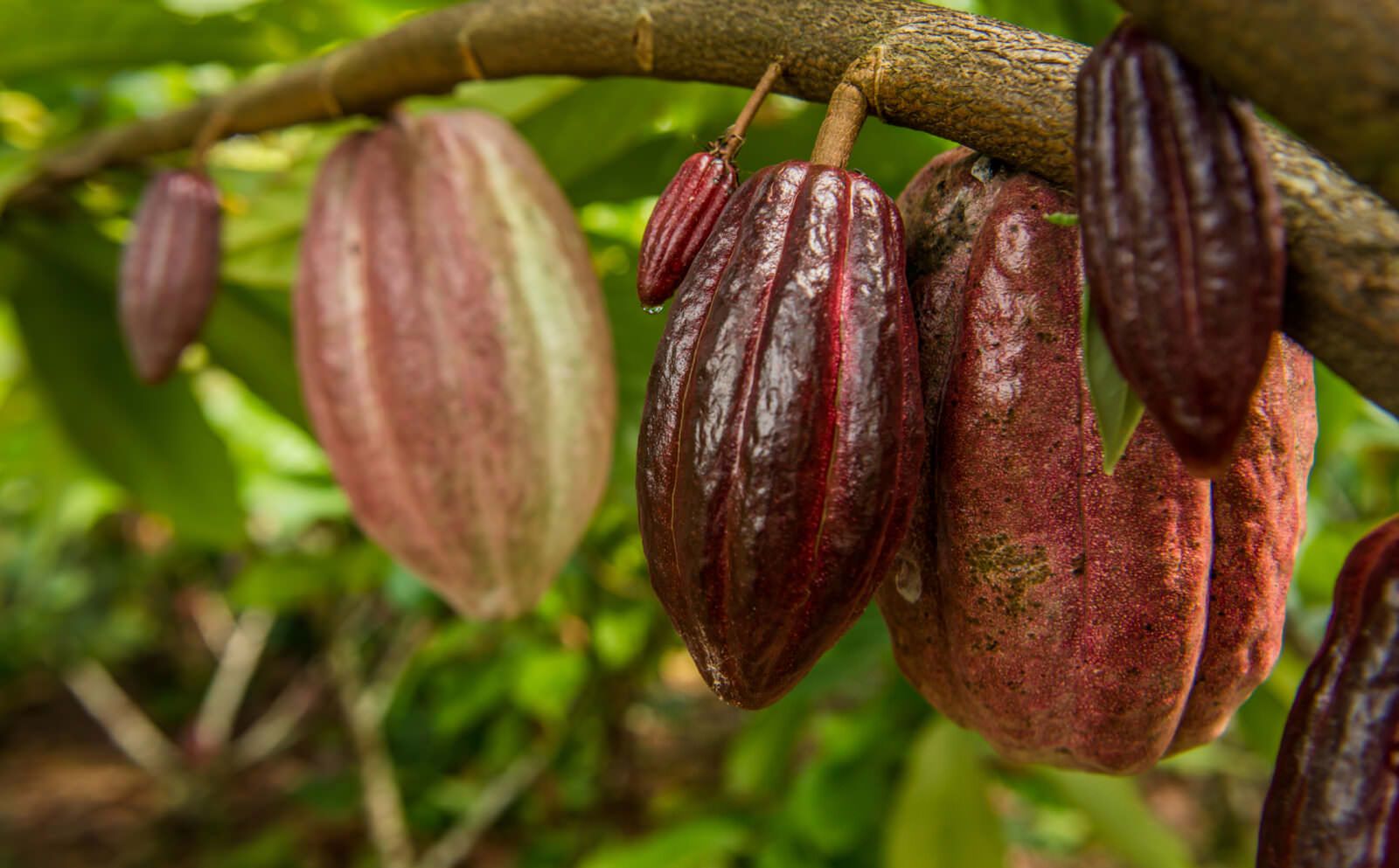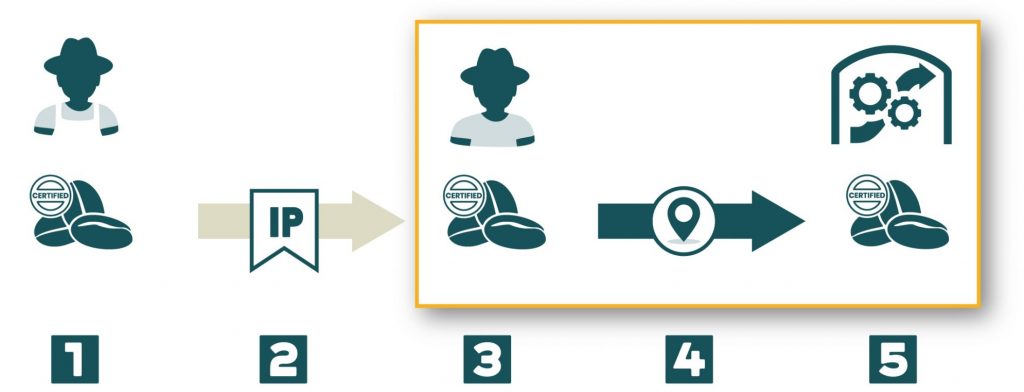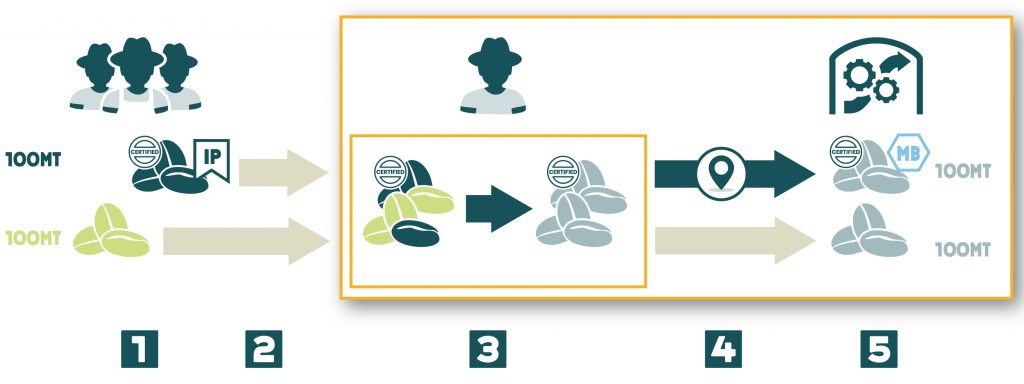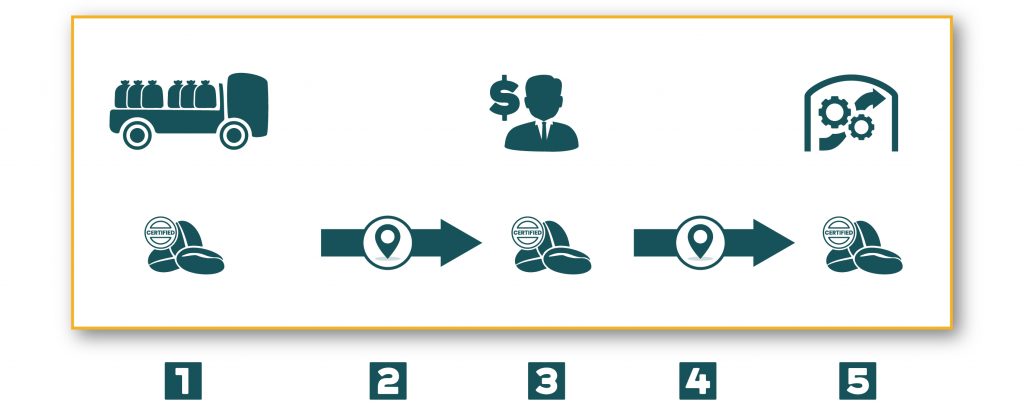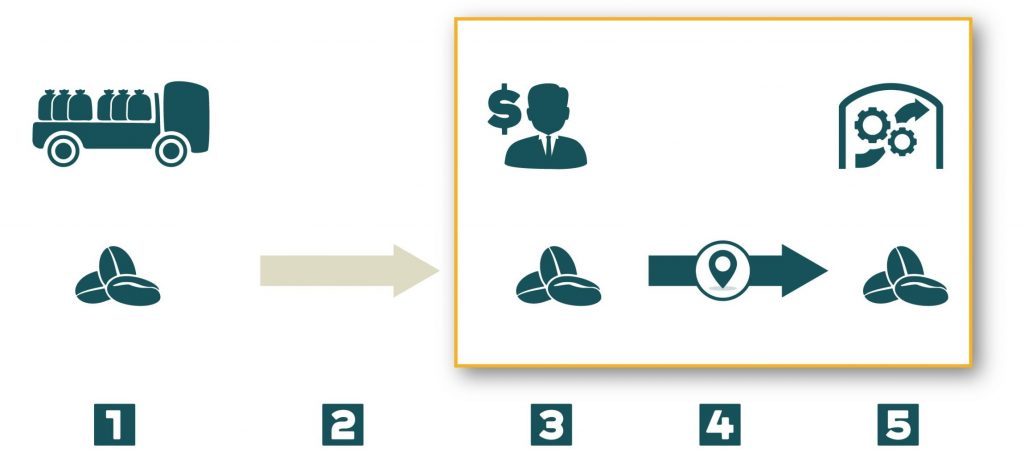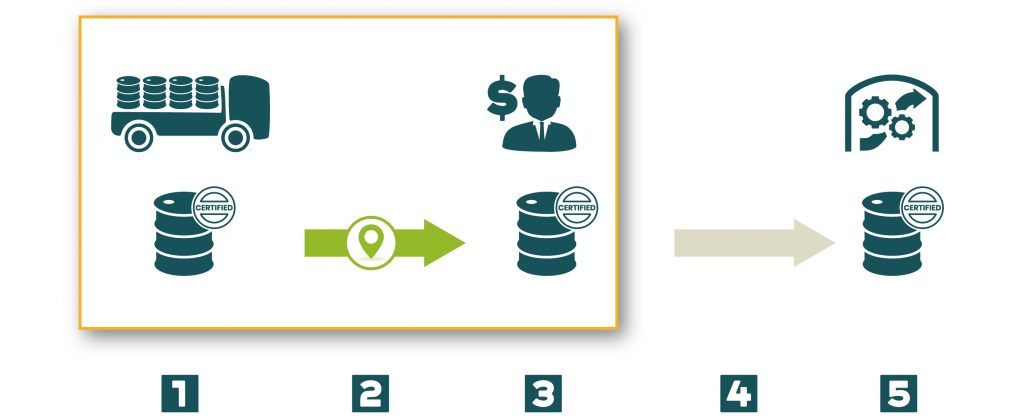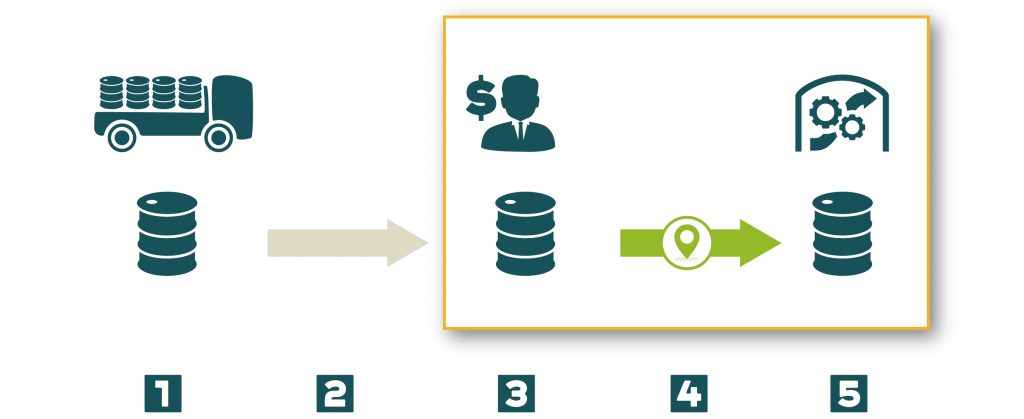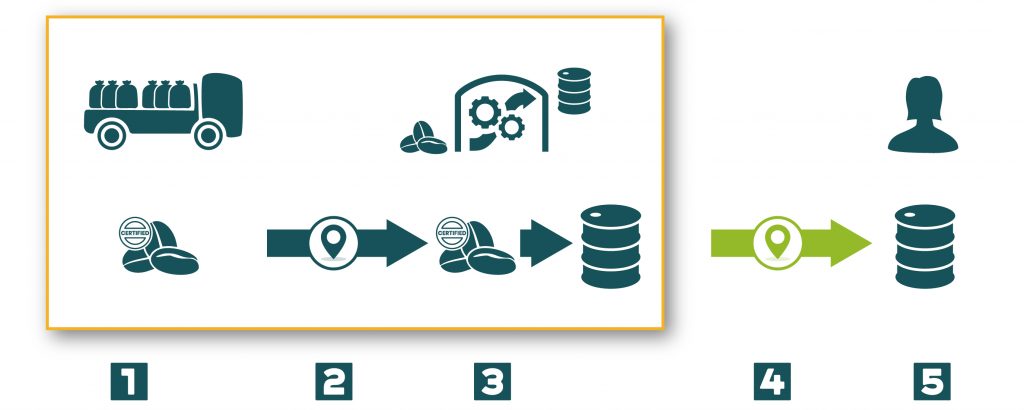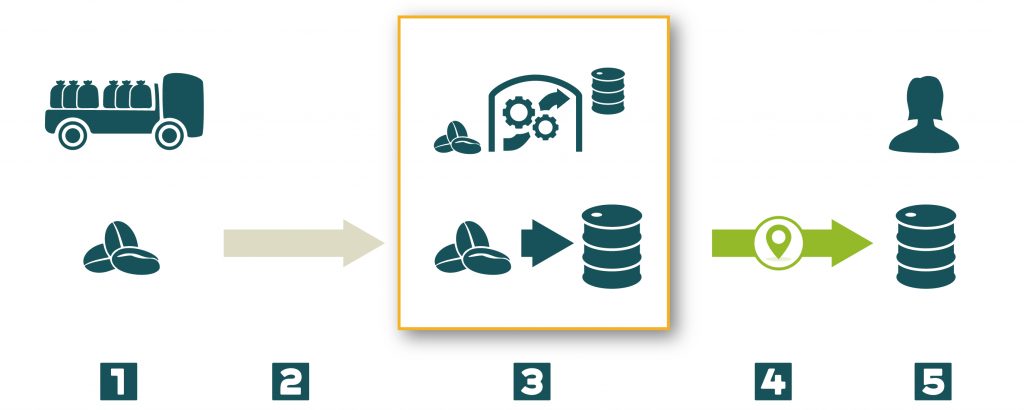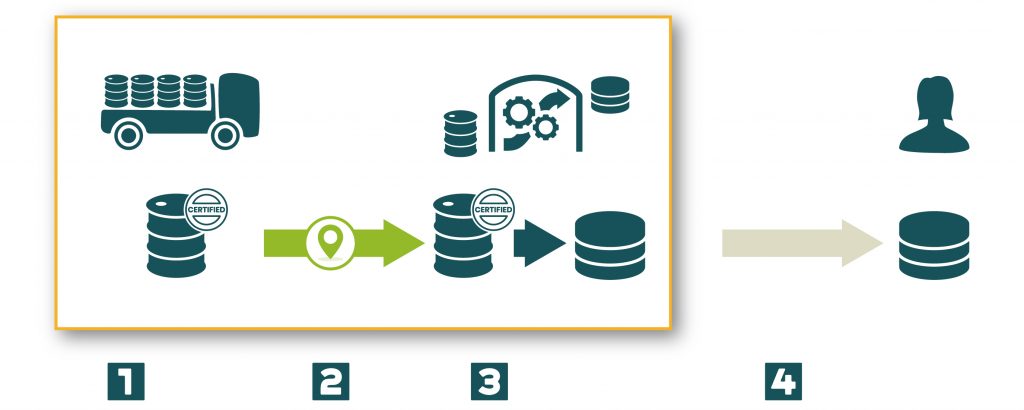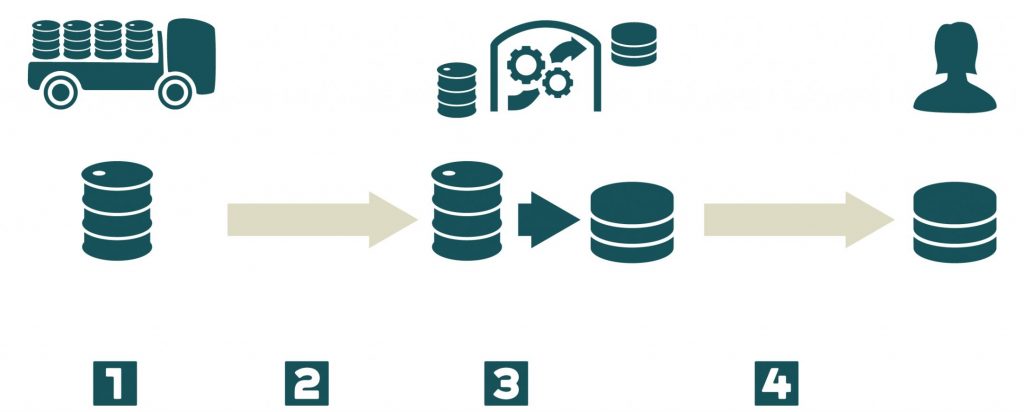Farmer poverty is an enduring issue in the cocoa sector. Our 2020 Sustainable Agriculture Standard addresses this critical issue from many angles, including the introduction of Origin Matching Mass Balance in cocoa. The aim of origin matching is to shift the investment in certification to better reflect the industry’s physical demand for cocoa. This shift will support farmers in the countries from which cocoa is purchased to ultimately create consumer products bearing the Rainforest Alliance Certified seal. The goal is to move toward a system that will also allow companies to better control their supply chains, enable them to mitigate associated (supply chain) risks and promote company accountability.
In the past few years, the cocoa and chocolate industry has seen demand grow for supply chain traceability from regulatory bodies in the US and Europe. Upcoming due diligence legislation in the European Union will only make traceability requirements a more pressing need. This means that traceability to origin level will likely become a requirement for the industry as the regulatory environment tightens.
It also means that the industry needs to look beyond Mass Balance traceability. The system has until now played a significant role in making sustainability initiatives scalable. Because companies don’t have to invest in segregating certified from conventional cocoa at the factory level, Mass Balance sourcing is a cost-effective way of implementing global sustainability practices, while providing companies the flexibility they need to scale their certified sourcing. Instead, these investments can go directly to the farmers who need them most.
However, mass balance has also allowed for certificates associated with one country’s production to be allocated to cocoa beans produced by non-certified farmers in different countries around the world. As such, those farmers are not able to benefit from participating in Rainforest Alliance certification.
Origin Matching can help address both challenges. With Origin Matching, more farmers will benefit from a Rainforest Alliance certified market, and the industry will have a tool that can help them to strengthen their regulatory compliance. Through Origin Matching, companies are building up certified cocoa supply in producing countries where certified volumes were previously insufficient to meet demand. Companies are putting in the necessary work where it was lacking in the past which better reflects the intentions of the regulations and creates the groundwork for implementing stricter traceability should it be required.
Origin matching is currently only being introduced for cocoa because of the scale and global reach of the program. We do not require origin matching for any other certified crops at this time.
Phased approach to origin matching
The phased approach to rolling out Origin Matching Mass Balance for cocoa is as follows:
July 1, 2021: Phase 1 – Beans, nibs and liquor
- In the first phase (2021-2023), Origin Matching Mass Balance is required for 100% of each purchase and sale of certified cocoa beans and nibs, and for 80% of the first certified sale of cocoa liquor on an aggregate level over a 12-month period. See full requirements in Annex Chapter 2: Traceability for details.
- Origin Matching Mass Balance rules apply to all cocoa volumes traded as Rainforest Alliance or UTZ certified. This also applies to any cocoa entering the supply chain under our 2020 Certification Program.
- With the start of Full Mutual Recognition, all cocoa volumes are now only be visible as Rainforest Alliance cocoa, greatly simplifying the administrative process of origin matching.
- Having received questions from the industry about how to calculate the annual recipe to implement origin matching of a company’s first certified liquor sales, the Rainforest Alliance will allow companies to companies to choose between two options:
- Calculate the annual recipe as is stated in Annex Chapter 2, or
- Calculate the aggregated inputs for all certified liquor sales across a 12-month period.
Either method of calculating Origin Matching Mass Balance on a company’s first certified cocoa liquor sales will be acceptable during an audit.
- Companies are permitted to follow an origin regional approach for cocoa liquor whereby smaller origins within a geographic region can be substituted for one another:
- West Africa region
Guinea, Liberia, Togo, Sierra Leone, Other Africa (Not Cameroon, Côte d’Ivoire, Ghana, Nigeria, Madagascar, or countries listed under Central and East Africa). - Central and East Africa
Congo, Democratic Republic of Congo, Equatorial Guinea, Gabon, Sao Tome and Principe, Tanzania, Uganda. - South America
Belize, Bolivia , Costa Rica, Cuba, Dominica, Grenada, Guatemala, Haiti, Honduras, Jamaica, Mexico, Nicaragua, Panama, Saint Lucia, Trinidad and Tobago, Venezuela, Bolivarian Rep. of , Other Americas (Not Brazil, Colombia, Dominican Republic, Ecuador, Peru). - Asia and Oceania
Fiji, India, Malaysia, Papua New Guinea, Philippines, Solomon Islands, Sri Lanka, Thailand, Vanuatu, Vietnam, Other Asia and Oceania (Not Indonesia).
- West Africa region
October 1, 2023: Phase 2 – Scope extended to butter and powder exports from specified origins
- Origin Matching Mass Balance rules have extended to cover cocoa butter and powder exports from certain origins, in addition to cocoa beans, nibs, and liquor.
- The rules for phase 2 are as follows and are included in the Rainforest Alliance Sustainable Agriculture Standard and associated Annex Chapter 2:
- Applies to cocoa liquor, butter, and powder products exported from Côte d’Ivoire, Ghana, Ecuador with contract signature date of October 1, 2023 or later.
- Require 100% origin matching on sales out of origin if exporting from Côte d’Ivoire, Ghana, Ecuador (includes liquor, butter, powder)
- Follow origin regional approach (applicable to all products other than beans and nibs)
- In 2024, the Rainforest Alliance will conduct an analysis of audit results, certified production and sales trends, and any other relevant data to determine if the scope of Origin Matching Mass Balance should be further broadened.
Note: Origin Matching Mass Balance will not be required for Brazilian cocoa beans or cocoa derivatives until January 1, 2026.
Cocoa Specific Requirements in Phase 1
In the first phase, origin matching will be required on certified cocoa bean and nibs purchases and sales and on certified liquor sales. Origin matching will be required for all Rainforest Alliance programs: UTZ, current RA and New RA.

Beans and nibs
The physical origin of all certified cocoa beans and nibs sales must be matched with the administrative origin (which is the origin the sale is linked to in our traceability platform). See full requirements for further details.
Liquor
Origin matching for certified liquor sales is only required for the first certified liquor sale to another certificate. Individual transactions do not need to be matched. Instead, sales need to match at least 80% over a full year, based on the recipe(s) of the certified liquor. See full requirements for further details.
Butter, powder and chocolate
In phase 1 (2021-2023), origin matching is not required for any sales of certified butter, powder or chocolate. The scope will be extended per 2023 as described above.
The full requirements for Origin Matching Mass Balance are published in the Rainforest Alliance Supply Chain Standard Annex 2 on Traceability.
Supply Chain Actor Diagrams

Overview of Trade Flow: First Buyer
The First Buyer is the initial supply chain actor legally owning the certified cocoa beans after the farm certificate holder. The First Buyer can then sell those beans as mass balance certified with 100% origin matching on the sale.

Overview of Trade Flow: Pure Trader
A Pure Trader will purchase certified or non-certified beans or cocoa products from another supply chain actor (Supplier). The Pure Trader can then sell those beans or products as mass balance with the correct corresponding certification credits.

Overview of Trade Flow: Processor
A Processor will purchase certified or non-certified beans or cocoa products from another supply chain actor (Supplier). The Processor will then convert those purchases into other products and sell those products as mass balance with the correct corresponding certification credits.

Overview of Trade Flow: Brand Manufacturer
A Brand will purchase certified or non-certified beans, cocoa products, or final products from another supply chain actor (Supplier). The Brand will then convert those purchases into final products and sell those products as mass balance certified.
Since chocolate is out of the scope of origin matching, Brands and Manufacturers of final products will only need to ensure that any mass balance certified cocoa bean purchases are 100% origin matched with appropriate documentation.

Overview of Trade Flow: Retailer
A Retailer will purchase certified final products from another supply chain actor (Supplier). The Retailer will then sell those final products as mass balance certified.
Since chocolate is out of the scope of origin matching, retailers selling final products will not be required to be audited against origin matching rules.

Traceability platform
- The 2020 Rainforest Alliance traceability platform has been adjusted to allow for origin matching.
- All Rainforest Alliance cocoa traceability is now available in MultiTrace.
- All Mass Balance cocoa certified under our Certification Program after July 2021 will have an origin associated with volumes entered into the MultiTrace system.
- Most of the cocoa volumes previously certified against the 2017 Rainforest Alliance Sustainable Agriculture Standard or the UTZ certification program will also have an associated origin with volumes.
- This will enable the Supply Chain to identify the country of origin of the Mass Balance credits for a significant share of certified cocoa.
- Under Full Mutual Recognition, all cocoa (regardless of whether it was certified under 2017 RA, UTZ, or 20202 RA) will only be visible as “Rainforest Alliance” cocoa, further simplifying Origin Matching Mass Balance. For details please see Full Mutual Recognition for Mass Balance Cocoa.
Origin Matching Mass Balance and certification risk levels
Origin Matching Mass Balance is a key element of our certification program. Companies needing to comply with origin matching requirements will require an audit for verification of these requirements. Risk levels may therefore be increased to ensure that the correct verification is in place. This is not an additional audit but incorporated into the audit process for the 2020 certification program. Please see Auditor Verification Protocol for more details.
Credit expiration for all cocoa (2020 Rainforest Alliance SAS, 2017 Rainforest Alliance SAS and UTZ Certified
It is not yet possible yet to input or show credit expiration dates in MultiTrace. Only when this is possible will we start the 2-year countdown for the expiration of your cocoa credits.
There is no need to worry about older credits expiring. No credits will expire before the countdown begins and we will give the industry sufficient notice before the credit expiration process is activated.
